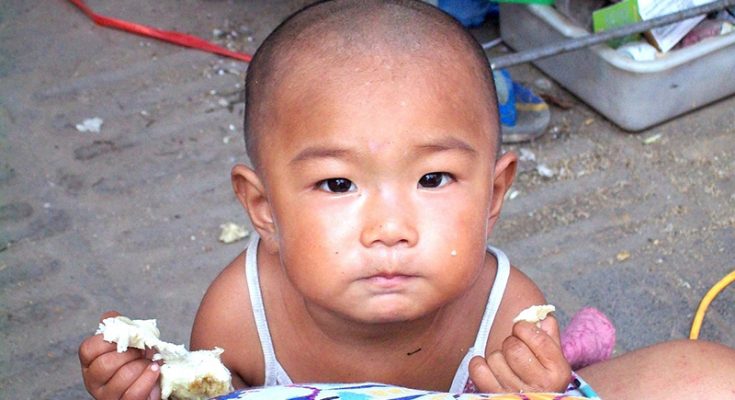#China, #RespiratoryIllness, #ChineseIllness, #ChinaRespiratoryIllness, #COVID19, #ChineseChildren
IBNS: Hospitals in northern China and the capital Beijing are witnessing a surge in children suffering from respiratory illnesses.
This is China’s first winter since it relaxed strict COVID-19 measures a year ago.
An official at the Beijing Children’s Hospital told state media recently as quoted by CNN that the current average of more than 7,000 daily patients “far exceeds the hospital’s capacity.”
A staff at Beijing’s Friendship Hospital told the American news channel it could take all day to show a paediatrician.
“Right now, we have a lot of kids here. Those who booked an emergency appointment yesterday still weren’t able to see the doctor this morning,” the staff member said.
Health officials in Beijing and other major cities in northern China have told CNN typical seasonal illnesses, including influenza and respiratory syncytial virus (RSV), as well as mycoplasma pneumonia – a bacterial infection that typically causes mild infection and commonly affects children – were driving causes.
World Health Organization (WHO) said it has been monitoring data from Chinese surveillance systems that have been showing an increase in respiratory illness in children in northern China since mid-October.
Since mid-October 2023, the World Health Organization (WHO) has been monitoring data from Chinese surveillance systems that have been showing an increase in respiratory illness in children in northern China.
At a press conference on 13 November 2023, China’s National Health Commission reported on a nationwide increase in the incidence of respiratory diseases, predominantly affecting children. Chinese authorities attributed this increase to lifting of COVID-19 restrictions and the arrival of the cold season, and due to circulating known pathogens such as influenza, Mycoplasma pneumoniae, respiratory syncytial virus (RSV), and severe acute respiratory syndrome coronavirus 2 (SARS-CoV-2). Mycoplasma pneumonia and RSV are known to affect children more than adults.
On 22 November 2023, WHO identified media and ProMED reports about clusters of undiagnosed pneumonia in children’s hospitals in Beijing, Liaoning and other places in China.
Through the International Health Regulations mechanism, WHO made an official request to China to provide additional epidemiologic and clinical information, as well as laboratory results from these reported cases and data about recent trends in circulating respiratory pathogens.
A key purpose was to identify whether there have been “clusters of undiagnosed pneumonia” in Beijing and Liaoning as referred to in media reports, and if so whether these were separate events, or part of the known general increase in respiratory illnesses in the community.
WHO further reached out through clinical networks for additional information.
On 23 November, WHO held a teleconference with Chinese health authorities from the Chinese Center for Disease Control and Prevention and the Beijing Children’s Hospital, facilitated by the National Health Commission and the National Administration of Disease Control and Prevention, in which the requested data were provided, indicating an increase in outpatient consultations and hospital admissions of children due to Mycoplasma pneumoniae pneumonia since May, and RSV, adenovirus and influenza virus since October.
Some of these increases are earlier in the season than historically experienced, but not unexpected given the lifting of COVID-19 restrictions, as similarly experienced in other countries. No changes in the disease presentation were reported by the Chinese health authorities.
Chinese authorities advised that there has been no detection of any unusual or novel pathogens or unusual clinical presentations, including in Beijing and Liaoning, but only the aforementioned general increase in respiratory illnesses due to multiple known pathogens. They further stated that the rise in respiratory illness has not resulted in patient loads exceeding hospital capacities.
The Chinese authorities advised that, since mid-October, enhanced outpatient and inpatient surveillance has been implemented for respiratory illnesses covering a broad spectrum of viruses and bacteria, including, for the first time, Mycoplasma pneumoniae. This complements existing respiratory surveillance mechanisms and may have contributed to the observed increase in detection and reporting of respiratory illness in children.
WHO Risk Assessment
In the current outbreak of respiratory illness, the reported symptoms are common to several respiratory diseases and, as of now, at the present time, Chinese surveillance and hospital systems report that the clinical manifestations are caused by known pathogens in circulation. Mycoplasma pneumoniae is a common respiratory pathogen and a common cause of paediatric pneumonia, and is readily treated with antibiotics.
“China has an influenza-like illness (ILI) and severe acute respiratory infections (SARI) sentinel surveillance system. Since mid-October, China has implemented enhanced surveillance systems for respiratory illness covering a broad spectrum of respiratory viruses and bacteria, including Mycoplasma pneumoniae,” read the WHO statement.
There is limited detailed information available to fully characterize the overall risk of these reported cases of respiratory illness in children.
However, due to the arrival of the winter season, the increasing trend in respiratory illnesses is expected; co-circulation of respiratory viruses may increase burden on health care facilities.
According to surveillance data reported to WHO’s FluNet and published by the National Influenza Centre in China, ILI was above usual levels for this time of year and increasing in the northern provinces. Influenza detections were predominantly A(H3N2) and B/Victoria lineage viruses.





